Multimedia Reporting
During this time, I also completed 9 multimedia reporting projects, combining text, visuals, and video. Each project gave me a chance to test how storytelling changes across different formats.
Example 1: Interview with Hamid Rahmanian
For this project, I created a multimedia profile of Hamid Rahmanian, an Iranian-born American artist and filmmaker known for his adaptations of the Shahnameh.
What I did:
- Filmed and edited a short video piece of him working inside his studio.
- Captured photography portraits that highlighted both the atmosphere of his workspace and his creative process.
- Wrote a biographical article that combined his personal journey with insights into his artistic vision.
Result: A cohesive multimedia package that blended video, photography, and writing, giving audiences an intimate look into Rahmanian’s life and work.
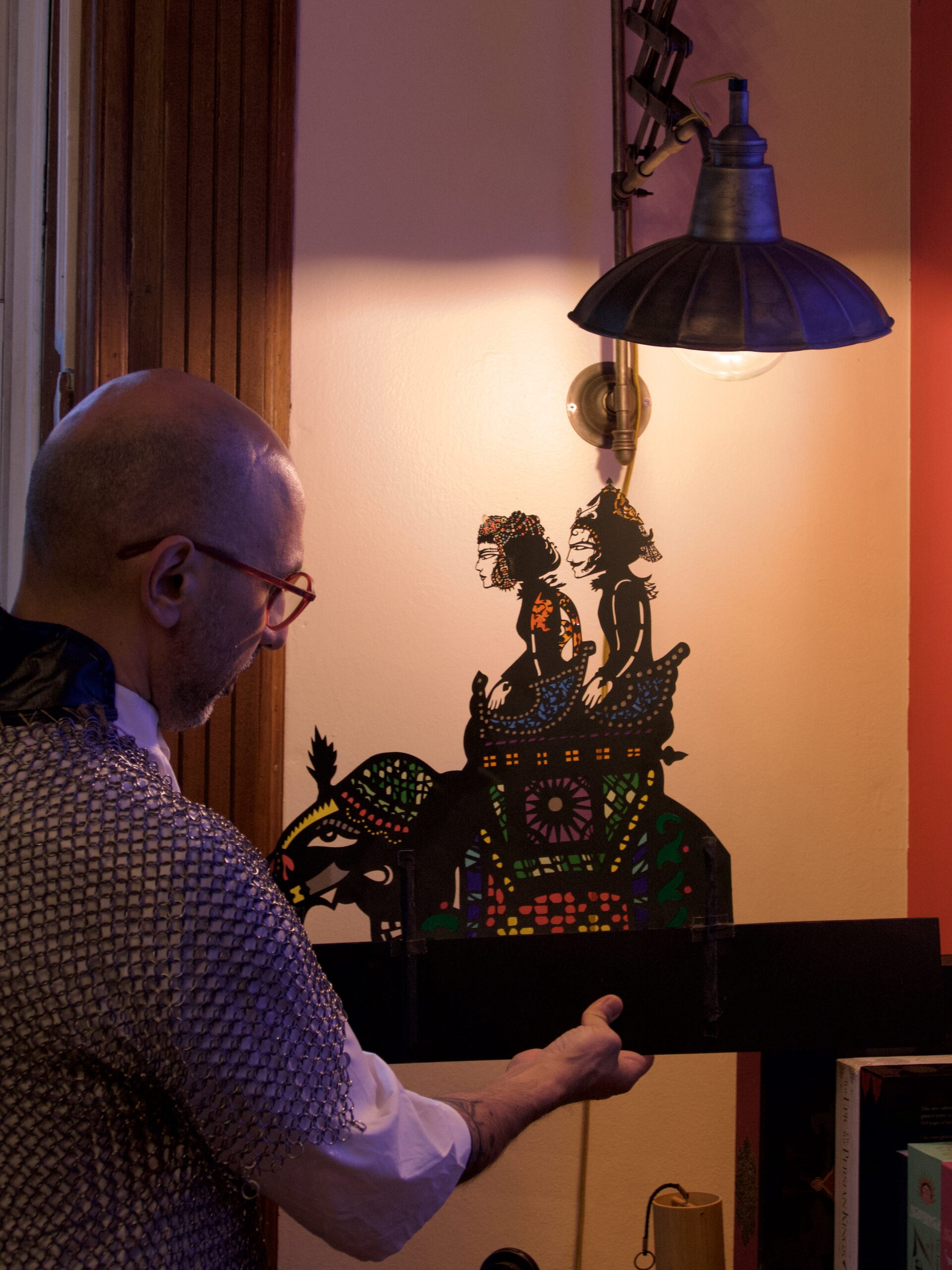
Bijan and Manijeh puppet from Song of the North
Symphony of Iran: Hamid Rahmanian’s Journey with the Shahnameh
On March 15th, the premiere of “The Song of the North” took place at the New Victory Theater in New York City, featuring 483 puppets, 208 animated backgrounds, 9 actors, and over 2300 production cues. Directed by Hamid Rahmanian, an Iranian-born American artist, the show is an adaptation of Shahnameh (“Book of Kings”), an epic Persian poem written by Ferdowsi in 1010. The Shahnameh holds immense cultural significance; it preserved the Persian language at a time when it was at risk of being erased, transcribing centuries of mythology phonetically into the Arabic script and safeguarding Iran’s pre-Islamic heritage. The Song of the North draws on this legacy, transforming the thousand-year-old text into a large-scale multimedia performance that blends shadow puppetry and animation to tell the epic Persian tale of Manijeh, who must save her beloved Bijan and prevent a war. The show celebrates unity, collaboration, and challenges Eurocentric narratives through a modern retelling of the Shahnameh.
Rahmanian has dedicated the last 17 years of his artistic career to interpreting Shahnameh. “Iran is like a symphony. There are violins, cellos, and oboes, and so many different instruments are playing together. But in the West, you often only hear the drum—just a repetitive boom, boom, boom. You miss the entire melody,” says Rahmanian. In his interview with Trops Magazine, Hamid talks about cultural significance, the art inspiration in immigration, and his artistic journey.
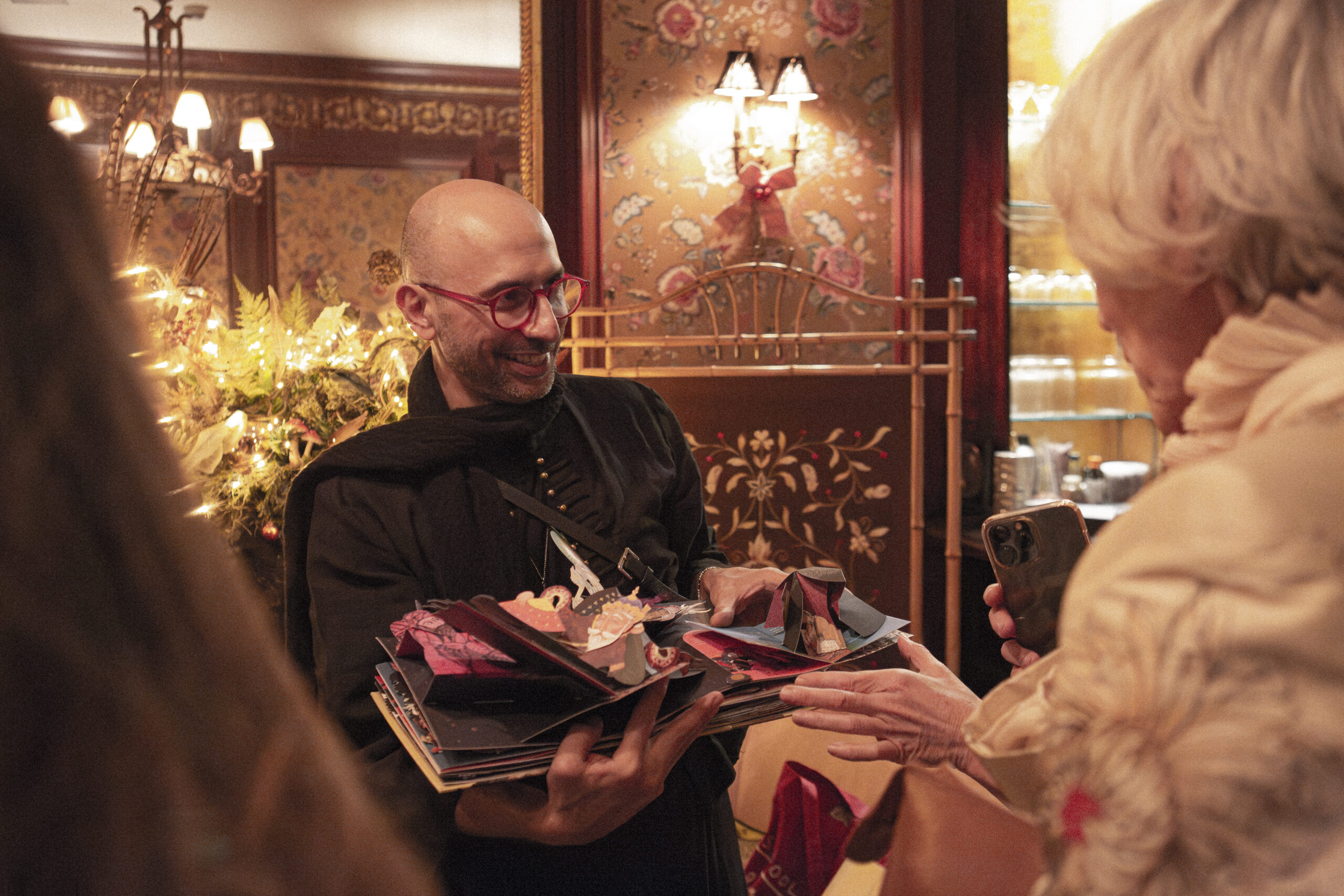
Ranhmanian showing the Zahhak popup book at Trops Yalda 2024
Hamid and his friend spent 6 months preparing for the art school exam, and both got accepted. “Since I opened that door and walked into that class, till now, I'm in the one straight line. I never changed my direction,” Hamid says. During his university years, Hamid focused on painting and graphic design.
After graduation in Iran, he moved to the US, pursuing a Computer Animation degree at Pratt University, and began working for Disney on the production of Tarzan. However, he soon left the company, continuing his career in independent cinematography. As a result, he produced 5 films. “I got very excited about my last film. Finally, I'm learning how to make movies,” Hamid says, “And then all of a sudden, something popped into my mind. I thought I needed to do something more important for society, as an immigrant and as an Iranian that was more fundamental for American culture. I would like to create a gift for American society because they are the host, and I am a guest.”
That is how Hamid Rahmanian came up with the idea of dedicating his art to the Shahnameh. The project initially started just from a book. “I'd spent over 10,000 hours to create this book. And it was very successful. And based on the book, we created a pop-up book, audiobooks, another pop-up book, and comic books, and then started playing a show,” Hamid explains.
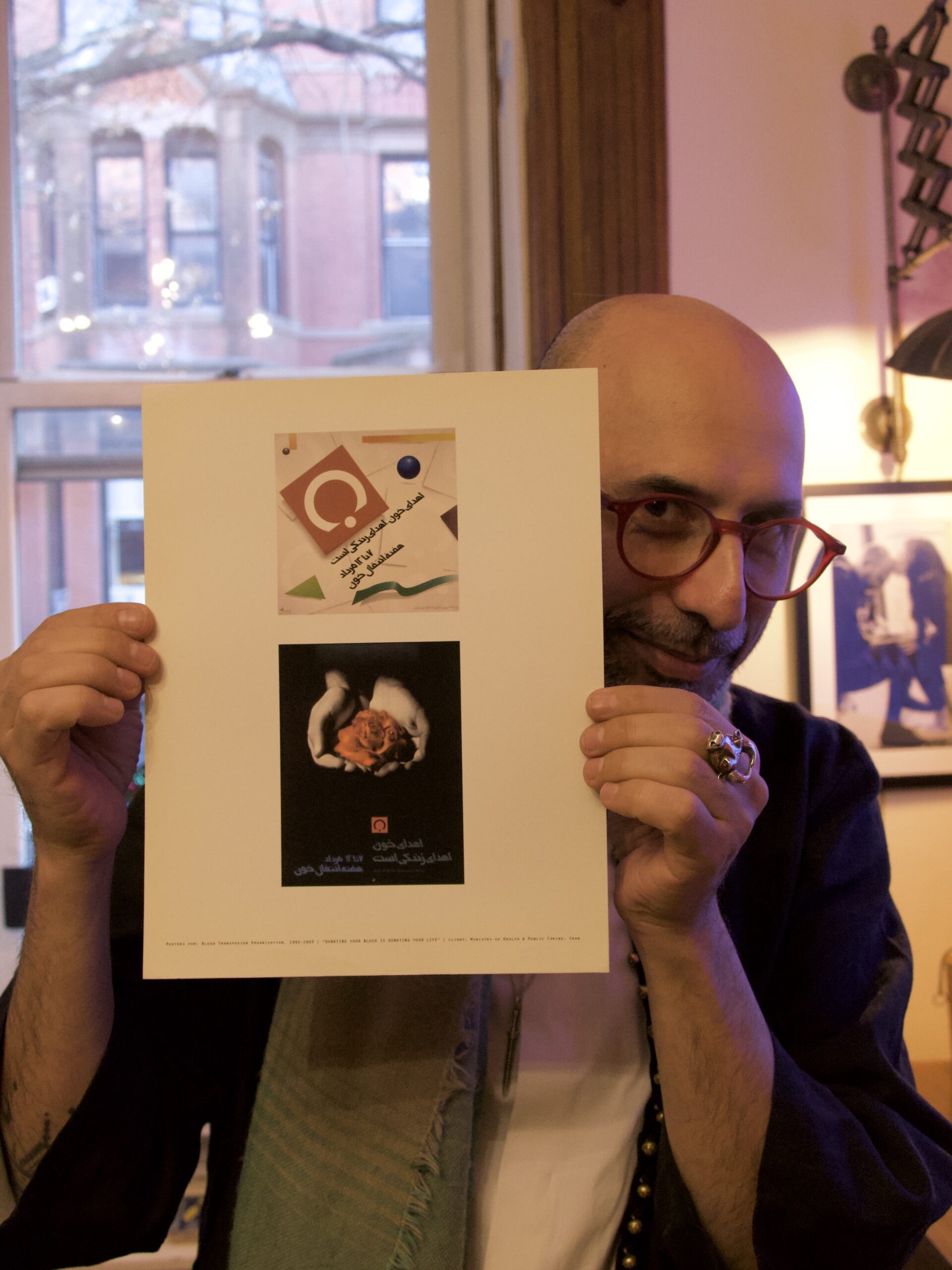
Hamid in the studio with early works from Iran
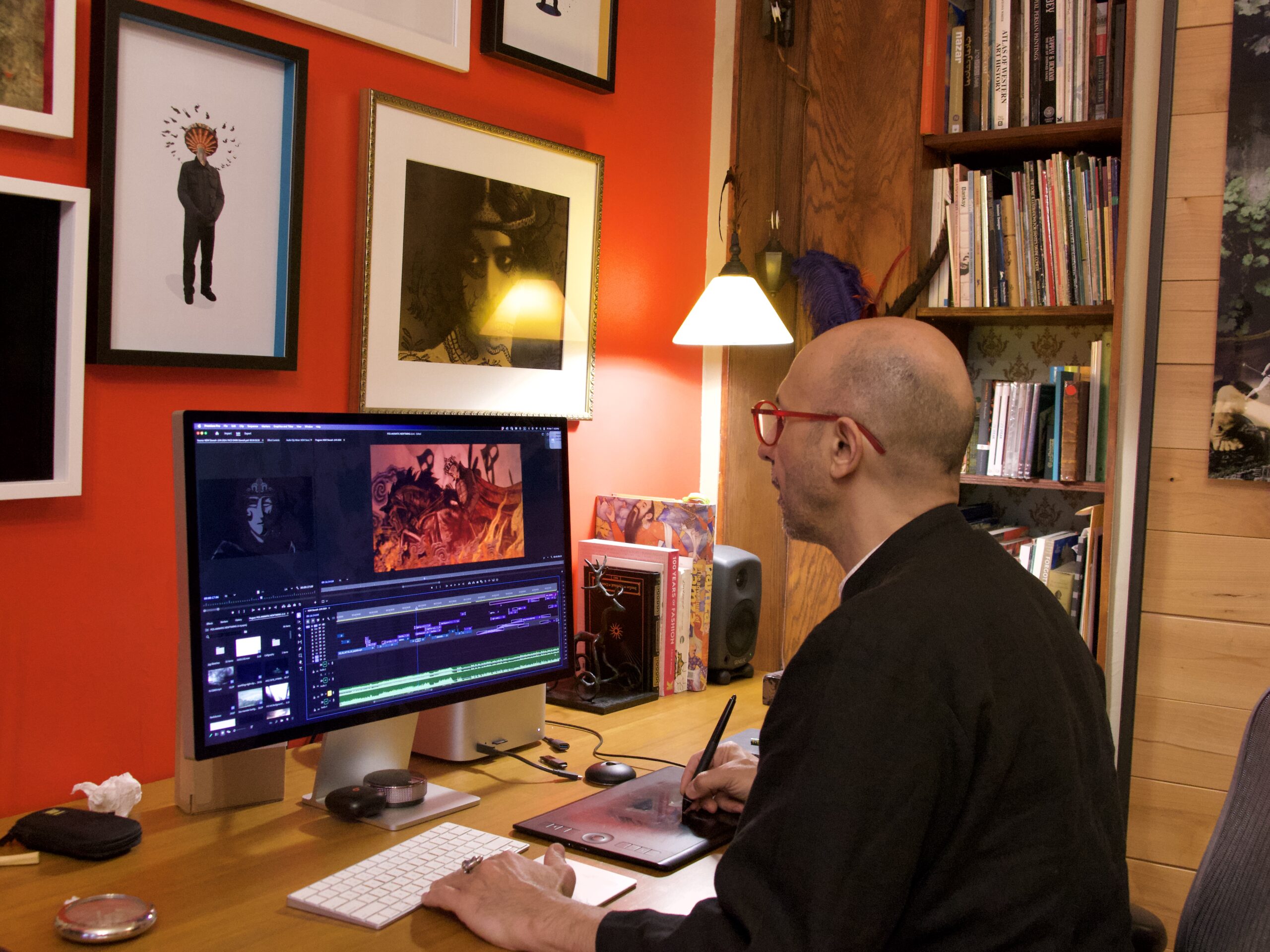
Hamid at his studio in Brooklyn

Fragment from Song of the North performance
According to Hamid, immigration played an important role in shaping his artistic and cultural vision. “If I had not migrated to the United States if I had stayed in Iran, I would have never done this,” he says. “I would have pursued something entirely different. But when you are an immigrant from a culture that has been so demonized in the media—always portrayed in a dark light, always discussed in terms of its issues and problems—it becomes impossible to ignore how your country is perceived in the Western world.”
Having chosen Shahnameh as an inspiration, Hamid justifies its cultural, historical, and artistic significance. “Shahnameh is a cornerstone of Iranian identity. It has kept the Persian language alive for centuries. It is a book that connects Iranians through history to their pre-Islamic past and the days before the Arab conquest of the seventh century.”Hamid Rahmanian’s work enriches the cultural landscape by bringing underrepresented stories from the Persian heritage into the American artistic mainstream. It fosters cross-cultural understanding, challenges stereotypes, and affirms the value of immigrant narratives in shaping a more inclusive American identity. Moreover, by being family-friendly, the adaptation gives the younger generations inspiration and direction to further explore not only Persian literature and culture but other underrepresented narratives as well.
Hamid himself perceives his work as cultural preservation, adaptation, renovation, and introduction. “All of my plays are adaptations of the original text because some parts are not suitable for a 21st-century audience. Some passages have become obsolete or too literary, as they were meant to be read. When you read something, your imagination takes over. But when you watch something, it’s different. You have to adapt the story, rewrite it, and reshape it to create the kind of communication you aim for with the audience.”
Hamid has an answer for the people who often ask him when he will be done with Shahnameh: “Ferdowsi himself spent 30 years writing Shahnameh, producing just one book. I’m following in his footsteps. I’ve already spent 17 years on this journey—so I have 13 more years to go.”
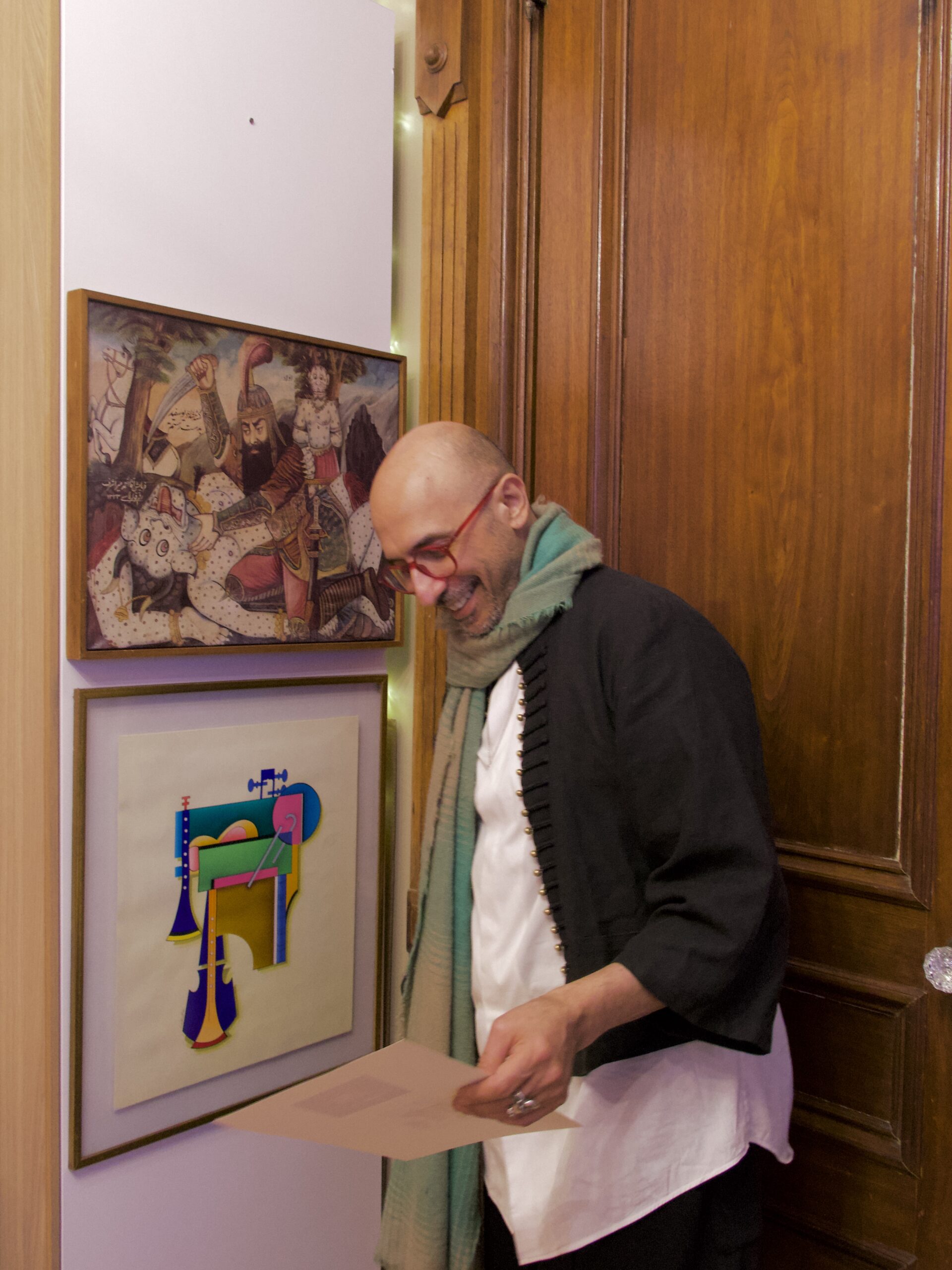
Hamid in his studio in Brooklyn
Example 2: Elizabeth Street Garden
This project focused on Elizabeth Street Garden, a community space in Lower Manhattan threatened by development.
What I did:
- Conducted in-depth research on the garden’s history, cultural significance, and the debates surrounding its preservation.
- Wrote a feature article that presented both the community’s perspective and the broader urban development context.
- Produced a photo reportage, capturing the atmosphere of the garden and the people who rely on it as a public space.
Result: A multimedia piece that combined analysis, storytelling, and visual documentation to highlight the garden’s role in New York City’s cultural and social landscape.
"Public Good vs. Public Need: Elizabeth Street’s Dilemma"
Elizabeth’s Garden is a small green oasis in the heart of Little Italy, New York, that features stone sculptures and is free for the public. However, in 2019, the New York City Council approved the Haven Green project, aiming to construct 123 affordable housing units for low-income and formerly homeless seniors on the garden's site. Despite the 2019 approval, the garden has remained open amid ongoing legal challenges, with its future still undecided.
Even on a foggy afternoon, the garden is full of people. Right at the entrance, there are two women peacefully sitting on a bench, talking, and… fundraising for the garden’s support with the poster saying “Write your Mayor! The city is moving forward with its attempt to evict and destroy the garden.” They did not wish to be interviewed. However, other visitors did. “I come here every week with my kids. There’s nowhere else nearby that feels this peaceful or welcoming,” said Jenna, who lives 10 minutes away from the garden. Kevin, who was reading the book in the garden, said: “It’s just sad that the city forces communities to choose between housing and nature. We deserve both.”
The proposal to replace Elizabeth Street Garden with the Haven Green affordable housing development first emerged in 2012. That year, City Council member Margaret Chin requested that the city include the garden site in the Seward Park Urban Renewal Area plan to address the need for affordable housing. The Department of Housing Preservation and Development (HPD) approved this request, transferring the land from the Board of Education to the New York City Housing Authority without public review.
The lead developer for the Haven Green project is Pennrose, which is overseeing project management, financing, and the building’s design and construction. Habitat NYC and Westchester is the co-developer, focusing on community engagement and stewardship of the proposed open space. The building would be seven stories tall, which some opponents argue is out of scale with the surrounding low-rise neighborhood, though supporters contend it aligns with the city’s broader housing goals.
The Elizabeth Street Garden occupies a 20,000-square-foot city-owned lot. Little Italy and SoHo have just 0.07 acres of open space per 1,000 residents, which is equivalent to only 3 square feet per person, making the area one of the most underserved neighborhoods in New York City when it comes to public open space.
On January 23, 2014, Manhattan Community Board 2 (CB2) passed a motion to help preserve a garden and “establish its official status as a public green open space.” This decision was influenced by strong community support and concerns over the neighborhood's limited access to open spaces.
On February 18, 2025, Elizabeth Street Garden, Inc. filed a federal lawsuit against the City of New York, seeking protection under the Visual Artists Rights Act (VARA). The lawsuit argues that the garden is a unique, site-specific work of art. They contend that any alteration or destruction of the garden would violate VARA protections, which safeguard works of "recognized stature" from intentional or grossly negligent destruction.
The problem of affordable housing is one of the most significant problems in New York City. Approximately 132,000 people reside in city-operated shelters. The city's annual HOPE survey counted 4,140 individuals sleeping unsheltered on January 23, 2024. However, this number is widely considered an undercount due to the survey's methodology and the transient nature of unsheltered homelessness.
As of early 2025, seniors (individuals aged 62 and older) constitute a growing segment of New York City's homeless population. While precise numbers are limited, available data indicate that seniors represent approximately 2.5% of the state's homeless population, one of the lowest shares nationally. However, the demand for affordable senior housing far exceeds the supply. Over 520,000 applications are pending for affordable senior housing units in NYC, including 300,000 for HUD 202 apartments and 220,000 through the Housing Connect Lottery.
In 2024, the city also financed 2,155 supportive housing units and 2,862 units designated for seniors, marking some of the highest figures in these categories, but only 0.96 percent of the recorded need. As a part of the program for developing affordable housing for New Yorkers, in October 2024, Mayor Eric Adams referred to Elizabeth’s Garden, saying, “The garden is a beautiful place, but there's a great beauty to be able to house New Yorkers.”
The garden’s story began in the early 1990s, when the land at 211 Elizabeth Street sat unused, a forgotten lot in a city where every inch of soil seemed to have a price tag. Allan Reiver, a local gallery owner and antique dealer, leased the space from the city and began transforming it. He brought ornamental statues, pedestals, and urns, giving the garden distinctive sculptural charm. In a print article in 1991, the New York Times said: “When the Elizabeth Street Garden opened last week, the neighborhood acquired an oasis.”
The article said that even back then, Reiver had difficulty renting the lot: “The indoor gallery opened in August, but it took Mr. Reiver nearly a year to arrange with the city to lease the lot, at $4,000 a month,” the Times reported.
“I think it takes someone with a unique perspective to see that what was a vacant lot in Little Italy in the 90s and to really envision it as something else,” his son, Joseph Reiver, Executive Director of Elizabeth Garden, said about his dad in the interview in 2019.
The sculptures presented in the Garden are mainly done in the neoclassicism style. The history of the majority of them remains unknown. However, by reviewing the archives, people managed to find the origin of some of them. One example is an ornate iron gazebo tied to the renowned landscape architect Frederick Law Olmsted. This gazebo originally adorned the Burrwood Estate in Cold Spring Harbor, Long Island—a Gilded Age property owned by Walter Jennings, a director and secretary of the Standard Oil Company. After Olmsted died in 1903, his sons, operating as the Olmsted Brothers, were commissioned to design gardens for the estate, including the gazebo. Among the other works of Olmsted Brothers are Union Square Park, some of the elements of Central Park, Prospect Park, and Grand Army Plaza.
As of now, the New York City government plans to continue with the project. Mr. Adams has not publicly changed his position, despite the rumour about Mr. Mastro, the deputy mayor, backing away from the Green Haven project.
The garden supporters claim that housing and green space do not have to be mutually exclusive, while the project supporters note that those who are pro-garden preservation are mainly the representatives of better-provided households. The non-profit organization managing Elizabeth’s Garden had approximately 1.9 million dollars in assets, according to the 2024 tax report.
Elizabeth Street Garden stands at the meeting point of memory and need. Its sculptures and shaded paths offer a brief escape, a reminder of what shared space can mean in a dense and hurried city. Just beyond, the call for housing grows louder, shaped by years of policy gaps and rising urgency. As the city moves forward, the story of the garden lingers—not as a simple choice between green space and shelter, but as a reflection of the layered, often conflicting values that shape urban life.








